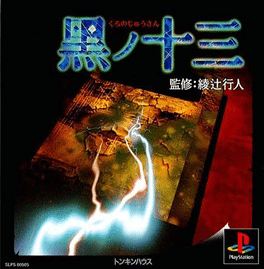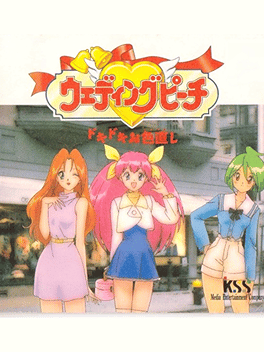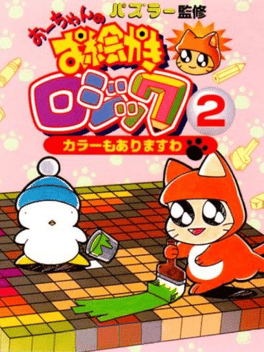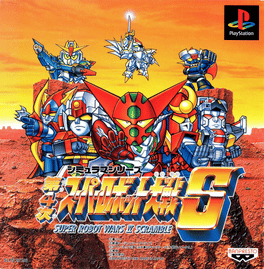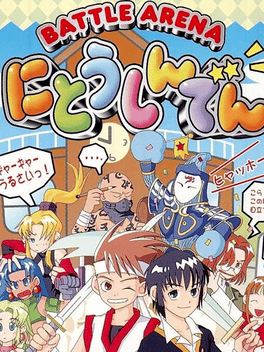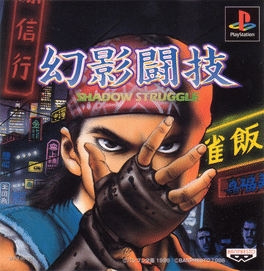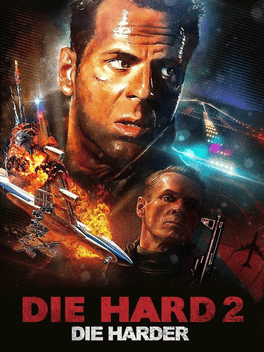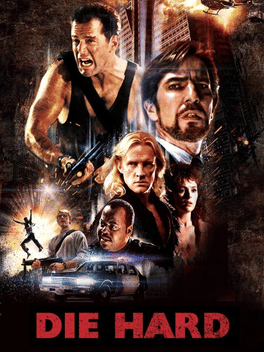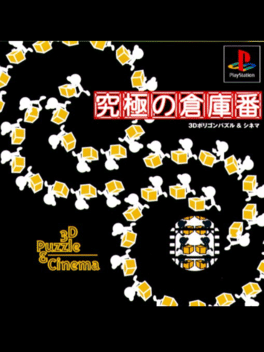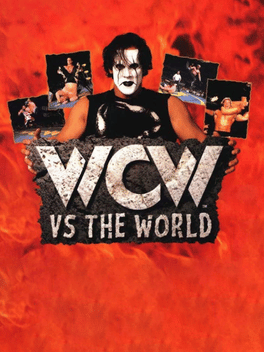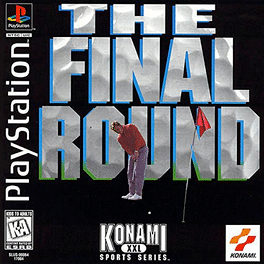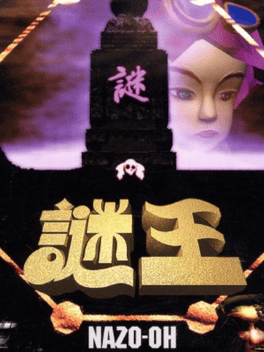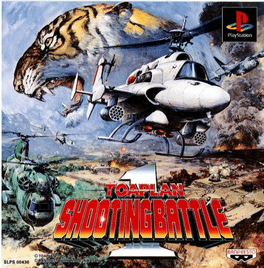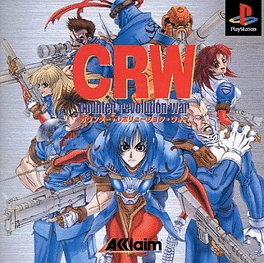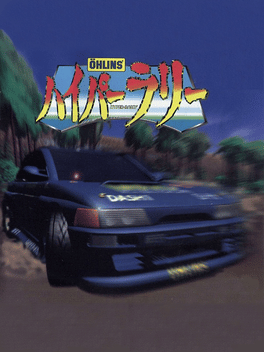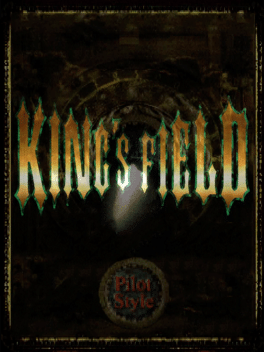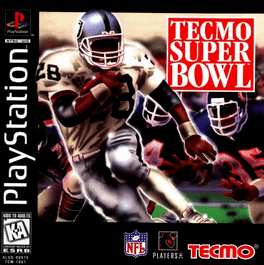New Ps Games - Page 86
-
Kuro no Juusan
1996
Kuro no Juusan
1996
Kuro no Jyusan is a sound novel / visual novel adventure game supervised by horror novel japanese writer Tsuji Aya and divided into 13 different chapters, in which the player will have different game endings depending of his choices during the game. The game stories are mostly ghost stories. -
O-chan no Oekaki Logic 2
1996
O-Chan no Oekaki Logic 2 is a sequel to O-chan no Oekaki Logic, a Japan-exclusive puzzle game based on the popular Picross game. The game is considered to be a spin-off of Sunsoft's Hebereke series. -
Battle Arena Nitoushinden
1996
The Toshinden cast goes back to school, as Toshinden Kids enters the arena...school arena that is. Select your favorite character in their youthful appearance and take on the rival fighters with all your might. 4 New characters appear for the first time in the series! -
Genei Tougi: Shadow Struggle
1996
In order to uncover the mystery of the "POS" dark organization, fighting action unfolds as eight fighters in the battle of the "Power of solid" fighting tournament takes place. Funds to buy techniques that could win the game, and unique arena mode where you can make your own character deepen the game. -
Die Hard with a Vengeance
1996
In Die Hard with a Vengeance, the player goes on a joyride driving a taxicab, sports car, and dump truck throughout all of New York City and is tasked with finding and defusing several explosives before they can go off. -
Die Hard 2: Die Harder
1996
Die Hard 2: Die Harder is presented as an on rails-shooter, where the player must stop terrorists who have taken over Dulles Airport from the second film. -
Die Hard
1996
Die Hard
1996
Die Hard is a third-person shooter. The player battles terrorists and rescues hostages in the Nakatomi Plaza, which is the setting of the first film in the series. -
Kyuukyoku no Sokoban
1996
Kyuukyoku no Sokoban
1996
Kyuukyoku no Soukoban - 3D Puzzle & Cinema is the first Playstation game of the classic puzzler based on the gaffer in charge of a warehouse needing to get the stock correctly stashed. Unfortunately the stock can only be pushed around requiring a bit of lateral thinking to get the warehouse in order. -
WCW vs. the World
1996
WCW vs. the World
1996
HOT WRESTLING ACTION! Chris Benoit, Lex Luger, Dean Malenko, Ric Flair, Eddy Guerrero, Hulk Hogan. Also appearing: Sting, Rick Steiner, Scott Steiner, Ultimo Dragon, Masahiro Chono, Lord Steven Regal... and more! Wrestle the world's toughest WCW wrestlers. Control non-stop 3-D action in and out of the ring! 15 of your favorite WCW superstars 60 wrestlers from 6 different organizations 30 to 40 moves per wrestler Over 10 hot 3-D arenas -
The Final Round
1996
The Final Round
1996
Grab your clubs and hit the 3D rendered links for stroke play, match play, or a skins game. The fluid motion-captured animation lends a realistic feel to your swing. In fact, we've given you everything a golf game needs, except the tacky clothes. - Six unique texture-mapped golfers - Multiple camera views - Play-by-play announcer - Practice mode - Easy to play arcade-style interface - 360 degree movement -
Nazo-Oh
1996
Nazo-Oh
1996
Nazo-Oh is an Adventure game, developed by Bandai Visual and published by Bandai, which was released in Japan in 1996. -
Fuuun Gokuu Ninden
1996
Fuuun Gokuu Ninden
1996
Fuuun Gokuu Ninden is a 1996 platformer for the Playstaton one developed and published by Aicom. -
Nyan to Wonderful
1996
-
Toaplan Shooting Battle 1
1996
Toaplan Shooting Battle 1 is a compilation of two classic shooters by Toaplan: Tiger-Heli and Kyūkyoku Tiger (Twin Cobra). Both Japanese and overseas versions of Twin Cobra are available. -
CRW: Counter Revolution War
1996
A Japanese turn-based strategy game published for the PlayStation in 1996. -
Öhlins Hyper-Rally
1996
Öhlins Hyper-Rally
1996
A 1996 PlayStation racing game with the license of automotive supply brand Öhlins. -
King's Field: Pilot Style
1996
The three King's Field PS1 games form a trilogy relating the saga of a mythical country named Verdite. King's Field 1 (released only in Japan) was the first RPG for the Playstation console and King's Field 2 (released as "King's Field" in the US and EU) was the first ever Playstation RPG in the US and Europe. King's Field: Pilot Style is a mini game whose story takes place in the period between King's Field 2 and King's Field 3. Pilot Style was given away as a promotional item at a game show in Japan and went relatively unnoticed. It only takes about an hour to complete, but it is an interesting tidbit in the King's Field world. -
Tecmo Super Bowl
1996
Tecmo Super Bowl
1996
Tecmo Super Bowl marks its first appearance on the Playstation after success in the both the 8-bit and 16-bit console markets. While the name hasn't changed, the game has undergone several refinements--perhaps none more dramatic than the ability to change the field's perspective. Instead of a horizontal view, you can now adjust the camera to a vertical or diagonal position. Instant replay, a tournament mode, expanded playbooks and live commentary have also been added to the game, to bring it up to speed with similar PlayStation sports offerings.
